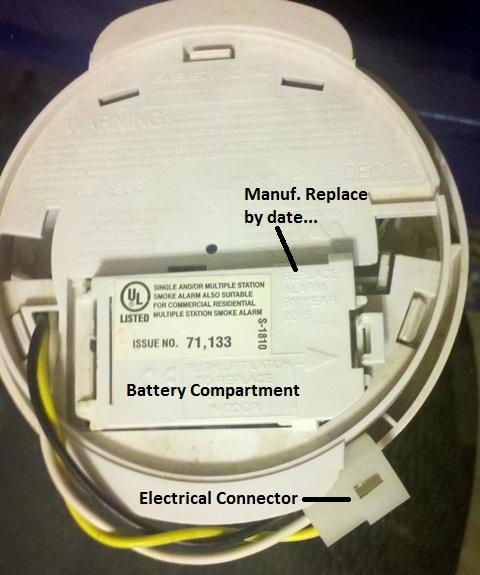 I am not sure you have caught it yet on the news or around the water cooler, but this Sunday marks the start of Daylight Savings Time (DST.) You can almost be guaranteed a piece on a clock shop & a reminder to change out your smoke detectors batteries. Amazingly most forget to mention your carbon monoxide batteries.
I am not sure you have caught it yet on the news or around the water cooler, but this Sunday marks the start of Daylight Savings Time (DST.) You can almost be guaranteed a piece on a clock shop & a reminder to change out your smoke detectors batteries. Amazingly most forget to mention your carbon monoxide batteries.
When should I change my battery?
First there are 2 main types of systems, with 3 different battery options – depending on which type of system you have will depend on when you need to change them.
- Stand-alone unit with a 9-Volt or other removable type of battery (Every 6 months)
- Stand-alone unit with Lithium / Sealed Battery (no battery replacement required or possible, must replace the whole unit at end of service life – see History section below)
- Stand-alone unit with a rechargeable battery (not recommended as many don’t have the stamina – 3 months or more often if required)
- Interconnected*** unit with 9-Volt battery (Generally once a year is a good bet especially if you have a few power outages a year, because you know they to start “chirping” around 1 in the morning)
- If you want to wait, wait till one starts “chirping” and then replace all the batteries at once)
- Interconnected unit with integrated Lithium Battery (Same as stand-alone lithium above)
- Interconnected unit with Rechargeable Battery (Same as lithium battery)
 When the advice to always change your batteries came out, all units sold then were basically of the standalone variety & had batteries that needed to be changed regularly. At that time you could spend more & get one with a lithium battery, enabling you not to be troubled by this as it as sealed & designed to last over 10 years. Needless to say, not everyone changed them regularly & way to many houses burnt to the ground and many lives were lost – all because the detector didn’t go off. There were also times that one unit would go off, but it was so far away no-one heard it. This brought about the “interconnected” units which primarily run off electricity & have a battery backup. When the advice to always change your batteries came out, all units sold then were basically of the standalone variety & had batteries that needed to be changed regularly. At that time you could spend more & get one with a lithium battery, enabling you not to be troubled by this as it as sealed & designed to last over 10 years. Needless to say, not everyone changed them regularly & way to many houses burnt to the ground and many lives were lost – all because the detector didn’t go off. There were also times that one unit would go off, but it was so far away no-one heard it. This brought about the “interconnected” units which primarily run off electricity & have a battery backup. |
*** Interconnected note: There is a newer smoke detector on the market which was designed to meet the required codes on interconnection, but it does not rely on wiring. These units will talk to each other via RF & are great in remodel situations. With that the battery change schedule is the same for the “stand-alone” versions.
This is a picture of an interconnected unit (see the Electrical Connector) with a 9-volt backup.

How about the newer “smart” versions?
As we reviewed, NEST offers a unit that actually will email or text you when the battery is getting low, in this case I would simply check the status online via your smartphone or laptop / or you can always wait for the text which you should get before it starts chirping at you.
Is DST the best time to do this?
In short, no it isn’t as DST has a weird habit of bouncing around. Essentially 4 months ago we just fell back off of DST & it wont be for another 8 months till this happens again. That is one reason why in our monthly maintenance schedules we slated January & July as the change out dates. If you would like to get on our schedule & you swamped them out in November, hold off & switch out your 6 month batteries in July (that is only 7 months & not 8) or one year batteries in January (unless they start chirping).
